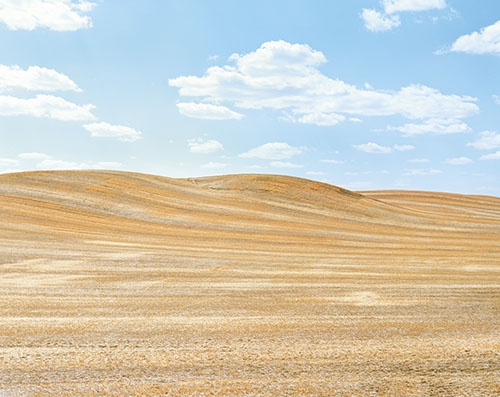 Photographs by Kyler Zeleny.
Photographs by Kyler Zeleny.
Bought the Farm
Small family farms are disappearing, but not for the reasons people tend to think. As investors rush in, farmers can’t hold on to their land.
It was late October and I was driving along a turkey trail in western Manitoba with my father on our habitual crop tour. The autumn air swept bitterly over the prairie, threatening to drop the world into winter. Already an early blizzard had passed through, leaving slashes of dirty snow over the brown crumb of the harvested fields. Only a few remaining squares of soybean, ready to be reaped, rattled in the breeze.
These were familiar, reassuring sights. I travel for work now, but as often as possible I return to my parents’ farm in Manitoba’s heavily agricultural southwest, where for years I lived and worked with the rest of my family. One-handing the steering wheel through slick patches of rotten mud, my father brought me up to speed on the local gossip: a laundry list of farm sales, retirements, and deaths. For a place renowned for nothing ever happening, I can never seem to look away without something changing unrecognizably.
The Great Plains gave frontier writer Willa Cather “the feeling that the world was left behind, that we had got over the edge of it, and were outside man’s jurisdiction.” There is a nautical implication in her words, and they suit the landscape. Most Manitoban farmland was once the bottom of Lake Agassiz, and signs of that ancient water are still there. The long sandy berms running through the topsoil demarcate stranded beaches where the shoreline paused for a century or two on its retreat north. Today, travel over the lake bed at the right time of year and there are rippling blue waves of flowering flaxseed, bronzed islands of wheat and barley, reefs of tuberous soybean, and cows lowing like buoy bells in a harbour.
My father has lived and farmed the same area his entire life; the fields where he grows wheat, canola, barley, millet and soybeans, and the wooded pastures where he grazes his small herd of commercial beef cows, all lie within a two-mile radius. Passing over that familiar country last fall, it was not quite how I remembered it. Gazing out over a neighbour’s field I had known well, I was struck by an eerie change in the view, as though a window now existed where I had only known a wall. I pointed and asked what happened.
“They cleared the trees,” my father said. Once fully realized, the change was stark. A large quadrant of birch and maple and a farmyard that had stood in the field were gone. The fresh, bared earth had been smoothed and traced with the wide tread-tracks of a bulldozer. It was the work of a local farmer who’d just bought the lot. My father explained how both the trees and the farmyard were razed shortly afterwards. “Pretty soon there won’t be a tree left in the country,” he said. Clearing land in this way, to free up a few extra acres and make it easier for wide machinery, is becoming increasingly common on the prairies.
We continued on, eventually stopping at a familiar crossroads alongside a field of stunted brown soybeans. For close to four decades, my father had been the sole renter of the 125-acre block of land. For much of that time, he was the only person alive who had planted any crop on it. He knew the divots and pockets of sand, and where to avoid taking heavy machinery if there had been a wet spring, as there has been for ten years running. For me, the land had always been a part of our farm. My father had committed himself to it, and nothing suggested it lay beyond the boundaries of his ownership.
It helped that the true owner, a ninety-two-year-old woman I will call Sylvia, had long since moved to an outlying city to live with her children. The only reminder of the land’s legal ownership was the yearly visit my father paid her to settle the rent. Their agreement was made on no more than good faith. The rent was almost a formality. This is not wholly uncommon among certain farmers in the Canadian prairies who hold trust and honour as the highest form of currency.
But when Sylvia died in 2018, her 125 acres were left to her children who, with no interest in farming, quickly decided to put it on the market. Suddenly, the land my father had tended to for decades was being pulled out from under him. It was a shock, even if it was one he’d seen coming.
My father and I didn’t linger at the lost field. For the first time in over half a century, the crop on it wasn’t his. Already, the trees that lined the creekside before us were being torn up, piled and burned. Their blackened trunks were heaped at the edge of the field like the splintered wreck of a ship—a ghost ship, it seemed, because who in a generation will remember that any of this happened?
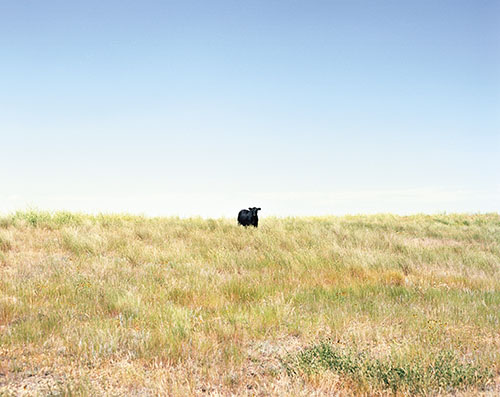
When Sylvia died, my father wasn’t expecting to be willed the land that he’d farmed for almost fifty years. But she did leave him something: a chance to match the highest bidder if the plot was sold. After waiting weeks to hear from Sylvia’s children, he finally called the agency brokering the sale. From them he learned the land had already gone to a large family farm, one that over the years had bought much of the tendered acreage in the area.
For my father, the loss of the land was coupled with the double sting of betrayal. Not only had a friend died, but a decades-old relationship between our two families had been severed. “The agent said that because our agreement hadn’t been put into writing, it didn’t amount to anything,” he told me. Not that my father would have offered to match what it went for; it ended up selling for almost $3,500 per acre, an exorbitant price for a marginal piece of land bordered by a scrubby brace of poplar trees and cut through by a ruddy, meandering creek. “It’s maybe worth five hundred bucks an acre,” my father said, adding dejectedly, “but, them what has, gets.”
Them what has gets—the idea that just as established wealth makes it easier to accrue more wealth, land is much easier to obtain by those who already own swaths of it. And for those who have keyed into the concept of farmland as a profitable investment, land and wealth now seem inseparable. Over the past decade alone, the national average price per acre of Canada’s agricultural land has more than doubled. During the 2010s, when a 110 percent hike in Vancouver real estate prices was being treated like the end times, Canadian farmers looked on in astonishment as the value of the land around them rose an equivalent amount without the corresponding media storm. Many areas saw an even more significant change, including Manitoba and Saskatchewan, where between 2009 and 2018 the average price per acre jumped 186 and 253 percent, respectively.
Like any sea, the prairies are not just scenery. There are pirates here too, and gold to be plundered. Over the past few years, of the dozen farmers who once operated near my parents, more than half have retired or quit, their land now either sold or leased to larger operators, many of whom are strangers. Although there’s been a tendency in agriculture for decades for big farms to rise from the fused land of smaller farms, this consolidation has increased exponentially since the global food crisis of 2007 to 2008, when Canadian-grown food was suddenly fetching sky-high prices around the world. While the number of acres under cultivation in Canada in the past seventy years has stayed fairly stable, the number of farms has drastically decreased, from almost seven hundred thousand in 1941 to just under two hundred thousand in 2016.
This drop in numbers is not simply a result of the retirement en masse of baby boomers, many of whom—such as my father—found in farming a viable, and comfortable, way of life. The problem is that the farmers who still remain in the business find themselves competing with outside investors looking to buy and consolidate large tracts of farmland. Across the globe, small rural communities have increasingly been subject to large-scale farmland purchases by sovereign wealth funds, agribusiness corporations, pension funds and other big business. In Canada, these “land grabs” also help drive the nationwide rural exodus.
And the problems associated with land grabbing are just beginning. Most of the land acquired by these corporations is rented or leased back to farmers. By 2011, leased and rented land accounted for 25 percent of all Canadian farmland, up from 2 percent in 1986. Some companies specialize in this practice, preying on farmers in need of a quick cash injection to stay afloat, but who have nothing left to sell but their largest and most essential asset. In this model, farmers become tenant workers, paying to work the property they had once owned.
But once farmland is owned by an investment firm, or considered an investment at all, its primary—if not sole—purpose becomes profit. With barely anyone noticing, this is happening to huge swaths of Canadian farmland, transforming the country’s rural landscape and the lives of the people who make their living off it.
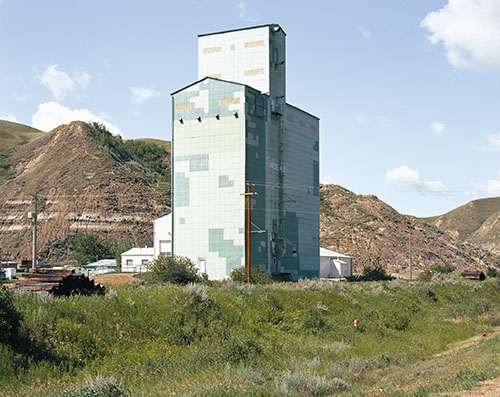
In my hometown of Gladstone, Manitoba, stopping in for lunch at the community coffee shop means passing a gauntlet of crag-faced farmers.
They are, all of them, old men. The average age of a Canadian farmer hovers somewhere north of fifty-five these days, but here it’s getting closer to eighty. Most no longer farm in any meaningful way, if they still own their farm at all; their unwashed overalls are powdered with as much donut as grain dust. Many of them have moved into town and have either sold or leased their land to other, larger farms.
Just as their land base has eroded, so have sentiments of community and trust. “People don’t see land, they just see dollar signs,” one farmer told me. He wasn’t talking about everyone in his generation; some are still willing to sell their land for lower, or kinder, prices. The problem is the lengths to which some others will go to grab their land anyway.
I was told about one retiring farmer who, after years of fighting off bids from surrounding farms, was approached by a young couple with aspirations of farming. The farmer had been holding out on principle—he suspected, in particular, that one neighbour making overpriced offers just planned to raze the farm to expand his already sizeable holdings. In the young couple, he saw potential and a desire to continue his legacy. Ultimately, he sold to them for a discounted price.
Only, once the sale was finalized and the old man had moved, it wasn’t the young couple who moved onto his property but the very bulldozer he had feared. The couple had been hired as an intermediary for the land-hungry neighbour, who was now free to level the retiree’s farm and expand his acreage.
The men in the cafe are the remnants of an oft-idealized agricultural past, people who have seen as much technological change in their lifetimes as there had been in the thousand preceding years. But now, in small communities, the concept of neighbourly intimacy has lasted longer than the actual neighbours; strange vehicles driving down rural roads now draw stares of morbid curiosity and variations of “who’s sold up this time?”
The tendering of a certain Manitoban farm in late 2019 encapsulates not just the extent of farm concentration right now, but the psychological transformation it has brought, the surreal logic. In a sale highly publicized within farming circles, the owners of Big Lake Angus Farm near The Pas opted to pool their sprawling 14,600 acres of cropland with two neighbouring farms. The resulting package, a behemoth of about twenty-four thousand acres, it was argued, would be easier to sell.
In a media interview in early 2020, Big Lake Angus Farm’s owner waxed lyrical about the days of his youth. Back then, each half-mile brought a new family farm, he said. “Now, you go miles and miles before you find any kids. There is no one really to take over these family farms from the family.”
Rosy stories about country schools, pick-up ball games, meat co-ops, and “family farms every half-mile” permeate the memory of the prairie. My father has them, my uncles have them, as does every farmer who lived through the “golden era” of farming from the 1960s to the 1980s. It remains a tangible history because it is so visible: the prairie is littered with ghost towns, cairns signifying long-gone country schools, teetering wooden grain elevators.
The irony is that it’s the very land consolidation of farms like Big Lake Angus—and, to be fair, the biggest family farms can do that consolidating just as much as corporations—that has gutted those communities. The combined parcel for sale could, according to the owner’s math, have held about 150 families. The asking price for this chunk of land was set just shy of $57 million.
Darren Sander, the estate agent brokering the deal, said he believed the land transfer was “opening the door for young farmers hoping to break into the industry,” according to a CTV article about the sale. The idea that any young person hoping to become a farmer can pay $57 million for a block of land this size—the acreage equals nearly a hundred square kilometres—not only points to the kind of blinding optimism that a salesman’s commission rates can generate, but also to the normalization that has grown around the increased size and price of farms. At that cost, no aspiring farmer can afford to enter the industry. Few entities outside of large investment firms or corporations could even consider it.
One of the chicken-and-egg problems connected with Canadian agriculture is the abandonment of rural communities: are these communities fading (and is land being consolidated) because young people choose a life beyond farming, or are the jobs—and land—in farming simply no longer there for them to take up?
To some extent, the jobs have disappeared. Tasks that once took teams of able-bodied workers are now done by complex machines in a fraction of the time. The young who once supplied the muscle and brains for those operations, and infused communities with families, business and a sense of renewal were forced to seek other employment, usually in cities. Computerization has only intensified the rural exodus, with rumours of self-driving tractors pealing like a death bell.
But when young people decide against a career in farming, it’s often because they are shut out of starter plots—including ones that, in past eras, they would have inherited from their parents. “One of the strong concerns people have surrounding the dwindling of rural communities is the question of farm succession,” says Katie Sandwell, a researcher at the Transnational Institute, an international think tank that studies agrarian and environmental justice, among other issues. With prices on the rise, “farmers often cannot afford to pass land on to their children because that land is their retirement fund,” says Sandwell. “This leads to youth flowing out of rural communities.” By the early 2010s, four fifths of Canada’s population lived in urban areas, she says, leaving the prairies a vast “youth desert.”
“The biggest problem for younger farmers right now is access to land,” agrees Annette Desmarais, who studies food sovereignty at the University of Manitoba. “Canadians have to realize that if we want a younger generation of farmers, we have to find a way to make land accessible to those younger farmers.”
It’s not only farmers being pushed out of the rural areas, either. “Larger farms mean that many rural communities are unable to sustain the services and institutions that require a critical mass of users to continue to operate,” Desmarais says. “The steady erosion of schools, hospitals, churches and post offices, as well as the closing of businesses, banks and grain elevators, creates a downward spiral, making it more difficult to continue to live in these communities.”
Back at the coffee shop, there is a melancholy to these old men with their stories about the good old days, one made sadder by the fact that there are no young ears to hear them. Canadians, whether they realize it or not, are witnessing another cultural demise as, in the words of the National Farmers Union in a 2015 report, “handing land, skills and knowledge from one generation to the next—an age-old cultural process—is being replaced with a system of financial transactions—a commercial process.”
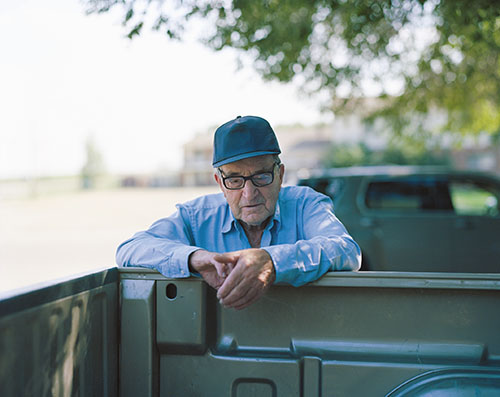
While I was home, my father showed me a data sheet sent to him by a Canadian corporate financial institution. It was a divestiture profile of a local farm looking for prospective buyers. The owner was selling through the corporation; anyone wishing to buy the farm could contact no fewer than four accountants for more information. It listed some information a farmer would be interested in: acreage (1,330 owned, 3,900 leased), irrigation, grain storage capability. But the identity of the farmer making the sale was missing. Even the location of the farm was vague, indicated as being somewhere within a sixty-kilometre-wide red circle hovering over southern Manitoba. Confidential was scrawled across the top of the document.
I ask what’s confidential about it—selling a farm is hard to disguise. “That’s just how it’s done these days,” my father said. “No face to it. Just corporate bullshit.”
Land grabbing has been at work since the Dominion Lands Act granted free plots of land to anyone with the will and capacity to endure the difficulty of the frontier; after all, the government treated the land as empty and ripe for the taking, despite the fact that it had been occupied by Indigenous peoples for millenia.
Census records show that land consolidation has been ongoing since the 1940s, when the number of farms and farmers in the country was at its all-time high. As better technology and urbanization took hold in the post-war environment, rural communities began to shrink. This continued through the 1980s and the heavy globalization of food systems. Canadian food was suddenly appearing everywhere—Manitoban wheat in Italy, Albertan beef in China, Saskatchewanian canola in Mexico—and Canadian land had never been more important. But where there was entanglement, there was also risk. Suddenly, a flood in Russia or an early frost in Germany could affect the price of Canadian crops on a scale never seen before.
When widespread droughts in 2006 caused the prices of staple foods—corn, wheat, rice, and soybean—to double within two years, Canadian farmers saw a major rise in farm income. Other countries, however, saw only hunger and desperation as the food and financial crises compounded during the 2008 recession.
As a result of the food crisis, several countries, including China, India, Japan, South Korea, Russia, Kuwait and Saudi Arabia, began buying land across the globe in an attempt to strengthen their food security.
The ethos of expansionism—pushing to extend the boundaries of what we have—is not uniquely Canadian; it has become inescapable around the world. In the years after the food crisis, farmers across the Global South found their tenure rights often ignored, their bids for land hopelessly defeated as they competed against national and transnational investors.
The ensuing global land grab hasn’t stopped; since 2006, it is estimated that between about 50 million and 150 million acres of farmland around the world have been taken over by transnational companies. Today’s investors now range from low-profile agribusinesses, such as Canadian-based Feronia Inc., which operates some 250,000 acres in central Africa, to prestigious institutions not usually associated with farming. For example, an international farmers’ group called GRAIN reported in 2018 that over the previous ten years, Harvard University “had poured $1 billion USD into amassing a global portfolio of farmlands covering nearly 1 million hectares across the United States, Brazil, Eastern Europe, South Africa, New Zealand and Australia.”
While most of those early land grabs occurred in the Global South, particularly within Africa and South America, countries in the Global North soon discovered they were not immune to the phenomenon. The agricultural lands of the Global North are, in many ways, a better investment: they offer political stability, an aging rural population and established industrialization. None of this has been lost on large corporate actors, and increasingly, great swaths of land in Australia, Europe and Canada are coming under the control of investment companies and private interests.
In the Global North, large-scale buys tend not to involve the same blatant dispossession and human rights abuses as they do in the Global South, and do not necessarily lead to equally dramatic changes. Land deals in Canada, as many will point out, happen under what the World Bank deems a “willing buyer, willing seller” model—the very basis of a cap- italist land market.
However, it is important to understand the definition of “willing” in this context, Sandwell stresses. “Multiple people would be willing to buy that land, so you need to ask the question why these large corporate actors are in a position to do so, and why small-scale farmers or aspiring farmers are not able to do so.” It’s a highly unequal playing field.
It’s even more unequal than it appears. While official statistics show the number of Canadian farms is steadily decreasing and the age of farmers rising, anyone looking at government data alone would still be misled about the distribution of land and wealth among Canada’s farms.
The problem is that Statistics Canada allows anyone to identify themselves as a farmer, or their land as a farm, if they have an “ability and desire to sell agricultural products.” As far as official data is concerned, the Olympic athletes are sharing the pool with the weeknight Aquafit class, as everyone from pony hobbyists to sausage enthusiasts can pile onto the farm wagon.
By eliminating these outliers, research by Desmarais determined that the average size of a Saskatchewan farm in 2012 was roughly 6,900 acres—far from the official Statistics Canada average of 1,668 acres. Data on landowners reflects a similar trend. In 2016, just 8 percent of Saskatchewan farms operated 38 percent of provincial farmland; 6 percent of Alberta farms operated 40 percent; 4 percent of Manitoban farms operated 25 percent. “Land inequality at this scale,” Desmarais says, “leads to deep divides in rural society, including income inequality.”
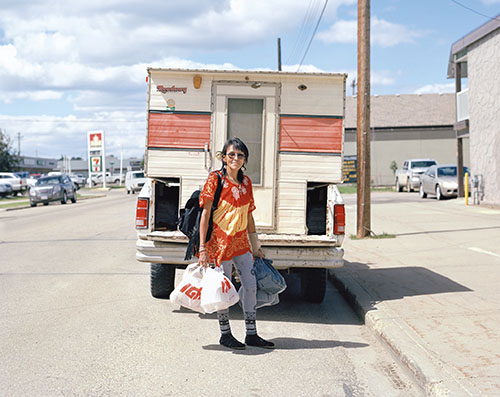
As land prices rise, Canadian farmers are only getting poorer. Between 1945 and 1975, farmers’ take-home revenue hovered around 45 percent of their gross income. By 2018, for every dollar farmers took in, they took home just six cents. To compensate for that ever-slimming margin, a third of Canadian farmers’ income over the last dozen years has come from a bevy of taxpayer-funded support programs.
Across Canada, small farmers have been buying more land to increase their overall productivity and profits by spreading their expenses over more acres. But they’ve also been borrowing to stay afloat. In 2018, the accumulated debt load of Canadian farmers reached a record of $106 billion—spread between just 270,000 farmers, or an average of almost $400,000 each.
Since 2000, farmers have borrowed at an average rate of $2.7 billion per year. That’s roughly the same amount as the interest incurred on the original $106 billion borrowed. As debt and borrowing have become normalized, the pressure to produce maximum profit in an ever-shorter time span has increased.
This dampens a farmer’s ability to make strategic decisions. The more money needs to be siphoned into debt repayment, the less is left to be cycled back into the farm. Aging machinery and facilities can be costly. “You need to replace one piece of equipment a year,” my father told me. “If it all breaks at once, there’s no way anyone can afford to buy new.” Add in the storage facilities, trucks, planters, various field implements and the maintenance required to keep it all running, and even before a single seed has entered the ground, the simple cost of managing a farm can skyrocket. And even farmers proud of being “asset rich, cash poor” will still admit they need something left over at the end of the day for themselves. Choosing farming as a career should not mean economic martyrdom.
The Canadian government has never expressed much concern over consolidation, and it’s often even facilitated it. After it first came to power in 2006,the Harper government began dismantling longstanding programs that had carried Canadian farmers through disasters such as the Great Depression. (It left a handful of others, the ones farmers have been increasingly relying on in the last decade, such as Crop Insurance, AgriStability and AgriRecovery. These function much like insurance, funded by a mix of taxpayer dollars and premium-like payments by the farmers themselves.)
With the protections it did choose to abandon, the Harper government ended up allowing a mammoth slice of Canadian land to be put on the open market. Cutting one of the protective programs, the Prairie Farm Rehabilitation Administration, released 2.5 million acres of federally owned and protected pastureland into the care of provincial governments to sell or rent as they saw fit.
Cloaked under the guise of market freedom, the reforms eventually gave foreign investors another kind of direct route to the Canadian agricultural system. In 2011, the Harper government sold the Canadian Wheat Board—and thereby express access to the Canadian grain market—to a Saudi Arabian-slash-American agribusiness conglomerate for a paltry $250 million. When the dust cleared, Ottawa did nothing to stop the hemorrhaging of farmers out of the business—some fifty-five thousand left the profession in under a decade.
Then there are purchases from nationally owned corporations. In 2014, the Canada Pension Plan Investment Board (CPPIB) bought 115,000 acres of Saskatchewan farmland as an investment and announced plans to spend $500 million for more. When farmers raised concerns about being forced to unfairly compete against the fund’s bottomless pockets, Agriculture and Agri-Food Canada told a national farming magazine that “investment funds that buy land are generally renting the farmland to existing farmers, and this can allow farmers to expand without the capital needed to buy additional land.” By the time pressure from farmers’ advocacy groups forced CPPIB to sell the land in 2017, its price had risen almost 30 percent in just three years. What CPPIB called a nifty cash-out was a rip-off for Saskatchewan farmers.
Small-scale farming is, by its nature, economically perilous, but investment companies have found a way to profit from it regardless. Investors may say they want to collaborate with farmers, but as the National Farmers Union pointed out in one report, they don’t share the risks. “When [farms] fail,” the report said, “creditors can gain more by selling the foreclosed land to one large buyer instead of dividing it for sale to local farmers.”
In a statement to Maisonneuve, Agriculture and Agri-Food Canada suggested the federal government’s role is limited. “Land-use planning is a responsibility shared by the provincial governments and local municipalities,” it said. “Private landowners make decisions about how to use and manage their land consistent with such provincial and municipal legislation.”
Ottawa, it said, “recognizes that farmland is one of Canada’s most valuable assets and that farmers need high-quality agricultural land to be productive.” But it said it must work with “other partners” to help farmers.
Tighter laws on such manipulation would be one solution. While Alberta, Saskatchewan and Manitoba have restrictions about how much land foreign investors can purchase, the rules are pliable and concessions are made to investors for many reasons, including the potential economic benefit to the province.
Ultimately, the current laws are toothless simply because legislators lack information. Various provincial land title offices track neither citizenship nor residency of land buyers, and investments in farm businesses are not reviewed by the Investment Canada Act to determine the intention of foreign investors. If a business wishes to purchase farmland for development, the loopholes are massive. By the time government officials are clued in, the land could be permanently removed from farm use.
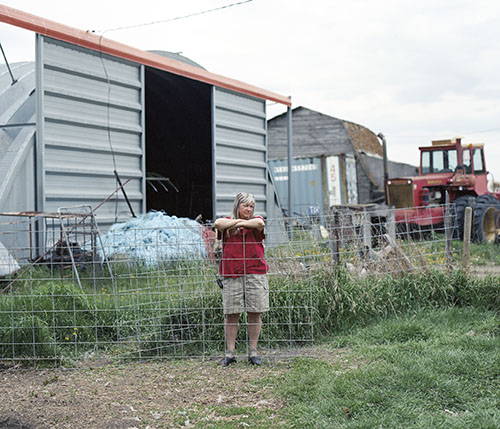
A local map pinned in my father’s garage charts the changes wrought on the landscape around his farm. Like a slapdash crossword puzzle, each field in the grid is voyeuristically labelled with the landowner’s name by the land titles office. Though the map is not old, almost all are out of date.
Dragging his finger across an area of dappled wetland near Lake Manitoba, my father describes new rumours—true or not—of investors purchasing land in the vicinity, specifically a well-known provincial teachers’ pension plan fund. He believes the rumours alone instigated a rush of agricultural expansion into the area.
But this region, marshy and wild, has historically been left untouched, only sparingly used as pastureland. “Nobody can make a go of it up there—or nobody should be,” my father said. “The previous generation left it like that for a reason.” Now, though, areas once considered unsuitable for farming are increasingly being clear-cut and put under the plow. Each time I return home, I’m faced with new vistas as woodlands and shelterbelts are torn down to increase acreages and ease the travel of larger and larger machinery. The suggestion of investment potential is strong. In another way farmers can be pushed into plots unsuitable for agriculture, investors sometimes decide to sell farmland for urban development, making it off-limits forever.
Farming has never been easy or thankful work. But few farmers, if any, would trade it for a different way of life. Ask any one: they’ll mention something about the freedom, the open air, the good, honest work. But another problem with land grabbing is that it changes the very nature of this work—farmers’ autonomy, and even the global food supply chain and the environment. “The fundamental problem,” Desmarais says, “is that the amount of land you own determines the model of agriculture you are going to adopt.”
Go big or go home has become the model of many farmers; the phrase nicely distorts the line between greed and survivalism, though for most it’s the latter. Once a farm becomes too large, however, what is unavoidably sacrificed is familiarity with the land. And, spread too thin to know their land intimately, farmers are forced into adopting the large-scale industrial model of agriculture, meaning increased use of pesticides, herbicides, insecticides and fungicides. Used indiscriminately over large areas, these processes can affect the farmland and its surrounding ecology on a scale from which it could take decades to recover, if ever.
Forcing farmers onto new land also creates an environmental danger. Cultivating land with little agricultural promise, like pastureland or forest, not only takes costly work that may produce poorer crops; it can also damage soil and plant biota that are not properly adapted to industrialized farming. After centuries of work on existing farmland, Canadian farmers would be needlessly, and detrimentally, starting from scratch.
“There was a time when farmers planted trees,” my father said, referring to the post-Dust Bowl era when government programs encouraged the planting of shelterbelts and greenery. During the Dirty Thirties, unchecked wind had carried much of the fertile topsoil away. “We’re supposed to have learnt this lesson once before.”
In talking to farmers across the prairies, Desmarais realized that all these problems “should be of concern for the people who do not farm,” she says. “If they’re concerned about the food they eat, if they are concerned about climate change, then they should be concerned about what kind of land legislation is in place, whether it facilitates the concentration or consolidation of land or promotes the increased purchases of land by outside investors. Those purchases determine what kind of agriculture will be practiced.”
This year has showed that turning farming into big business carries other kinds of threats. Big farms rely on migrant agricultural workers, creating an appalling Catch-22 during the pandemic—when the workers didn’t arrive, crops were lost; when they did, thousands of them became sick and some died of the virus.
Do we want a globalized food system which, when beset by freak weather events and global pandemics, endangers people’s safety or means to eat? Should we have an empty rural landscape producing crops that are geared toward the export market? Or prairies filled with various types of farms that are producing for local markets? Do we care, as a country, about the existence of vibrant rural communities? We need to collectively answer these questions, Desmarais says.
Somehow the simplest thing in the world—plant a seed, help it grow, eat the plant—has become an unknowable, obscure financial maze. Government policies have created a system where, in the increasing scramble to remain solvent, farmers have become the middlemen in their own industry, trapped in a cycle of funneling money from credit agencies to seed providers. But through it all they continue planning, rearing, raising and selling.
My father’s last act on Sylvia’s rented land was to drain the water from two low-lying patches of wet earth. I couldn’t remember a time over the past ten wet years when they had grown anything but cattails and reeds. It was an effort he never reaped the benefit from. The following year, the newly dished-out low spots were invisible under a uniform carpet of someone else’s soybeans.
Near the end of our drive, I asked my father about the future of agriculture. He shrugged.
“There’s no sense anymore,” he said, commenting on a neighbour who had recently called him up. “He asked if I wanted to rent out any of my land. I’m still farming, for Chrissakes! Anyway, he’d just sold four quarters—who does that then goes out looking for something to rent?”
Normally, farmers are optimists. They balance pragmatism with a commitment to believing the sun will—must—come out. Nonetheless, I have noticed over the years dark sentiments beginning to pepper the conversation; bitter, unpalatable spices of reality. “We used to help our neighbours. Now it’s all about trying to buy him out,” my father says. “No, you don’t get anything for helping the neighbour out anymore. Nothing. You just get fucked.”
A silence fell between us and we stared out over the brown seascape of land. I was full of gloomy thoughts. We both knew the trajectory that lay in store for the country around us. It seemed likely that one day, it would all be owned by one person—a person not from here, a company perhaps, the land beetled over by driverless tractors and monitored by drones. It meant not only a transfer of land but a dropping of a cultural curtain on the Great Plains.
“It’ll work out,” my father says, at last, sucking his teeth. “Or not.” Optimistic pragmatism—the farmer’s enduring trait. And in it, there was Willa Cather again: “We come and go, but the land is always here. And the people who love it and understand it are the people who own it—for a little while.”
J.R. Patterson was raised on a beef and cattle farm in Manitoba. He has published fiction, journalism, and literary criticism. At work on his first novel, he divides his time between Scotland, Canada and Portugal.
About the photographs: This project by Kyler Zeleny, Crown Ditch and the Prairie Castle, documents a resilient people shaped by generational lessons in fortitude. The prairies are a unique meeting of landscape, industry and culture. Though the region’s earlier era is gone, its legacy remains.





